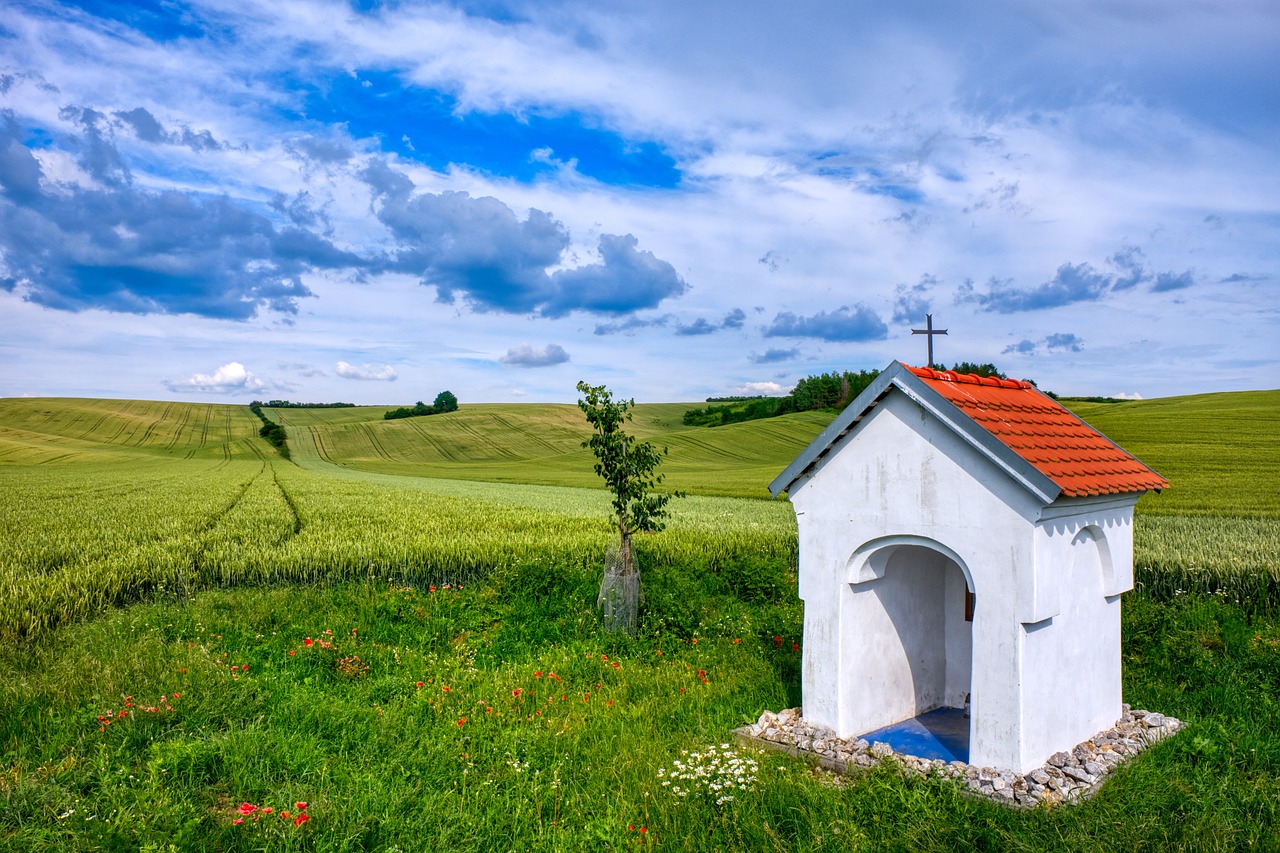In traditional culture, shrines and wayside crosses were an important part of the landscape of the Polish countryside. They had topographical significance, usually standing at the edge of the village. Some ethnographers interpret their significance as a remnant of the belief in demons lurking for humans at crossroads and crossroads. The cross was supposed to ward off evil spirits and stop their power. It was also a symbol of patriotism. As Adam Mickiewicz wrote: "Only under this cross, only under this sign, Poland is Poland, and Pole is Pole."
Crosses, shrines and freestanding statues were places of common prayer for various intentions. Passing by them, people said goodbye praising God or raising silent petitions for the success of their intentions and thanking him for his protection. Often they were a tribute of thanksgiving for graces, for miraculous recovery, happy return from war, exile or exile, for protection from many misfortunes such as, fire, flood, war or epidemics. It also happened that they were the fulfillment of penance for sins committed. In villages where there were no churches, it was roadside shrines or crosses that were the meeting place of the local community, on the occasion of various religious holidays or important events. It was from them that the procession with harvest wreaths began, at them food was blessed on Holy Saturday and farewells were said to the dead. It was said that they were "the prayer of the Polish people scattered across the landscape.
In May, in the afternoon or evening, after the completion of field work at wayside shrines, local people, adults, children and young people would meet to sing the Litany of Loretto and devotional songs together. The singing rang out from shrine to shrine as a widely cultivated folk custom.
The origins of May devotions can be traced to songs praising the Virgin Mary known in the East as early as the 5th century. In the West, the dedication of this month to the Mother of God appeared only at the turn of the 13th and 14th centuries, thanks to the Spanish King Alfonso X. He encouraged people to gather in the evenings to pray together in front of statues of the Virgin Mary. These prayers quickly gained popularity throughout Christian Europe. The centerpiece of the May devotion is the Litany of Loretto, a hymn in honor of Mary, in which her great virtues and privileges bestowed on her by God are praised.
In Poland, the first May devotion was celebrated by the Jesuits in Tarnopol (1838), the missionaries in Warsaw at the Church of the Holy Cross (1852), Father Golian in Krakow (1856) and in Wloclawek by Bishop Marszewski (1859). A remarkable commitment to the dissemination of the new form of piety was demonstrated by Father Karol Antoniewicz, who in 1850 published a collection of seventeen Marian songs, titled "Wianeczek majowy", which included the still well-known song "Praise the meadows umajone".
Participation in the May Day service is primarily a religious experience, but also an important cultural event, a continuation of a certain tradition. As early as the 1870s, many Polish villages met at shrines to pray together in honor of the Blessed Virgin Mary. "May Day services" were an expression of folk piety and, although devoid of liturgical celebrations, breathed fervent and sincere prayer. Small shrines with images of Christ, Mary, saints, made by local artists, were venerated and regarded as local holiness.
The oldest participants in the services recalled that "people went to the 'May Day services' in the evening, between nine o'clock (more rarely eighteen o'clock) and twenty o'clock, after finishing work in the fields or on the farm." They dressed up "a little better than near home." In villages far from the church, many people gathered at crosses and shrines. Prayer and singing were a rest after the hardships of the day. The services were attended mainly by women and children. Men, or rather bachelors (also from neighboring villages), appeared only at the end to escort young maidens home. "May Day" was usually led by one person, the best singer. She intoned the chants - "gave the melody", which the participants took up.
May services were described by Wladyslaw Reymont in his novel "Peasants": "They gathered, therefore, to celebrate the service near the cemetery, where a small chapel with a statue of the Virgin Mary stood near the gate. Every May the girls decorated it with paper ribbons, gilded crowns and threw wild flowers at it to protect it from complete ruin, as the chapel was age-old, cracked and falling into rubble. (...) A lot of people came together and as quickly as they could, they decorated the shrine with greenery and flowers, someone shoveled garbage, someone poured yellow sand, that having stuck candles and lit lamps in the ground at the feet of the statue, they all began to kneel devoutly. - The blacksmith knelt at the front, in front of the threshold, charged with tulips and rose hawthorns, and was the first to start singing."
Today, somewhat less often than in the past, villagers meet at shrines for communal May prayers. They are mainly elderly women and children. Although in some localities, thanks to the initiative of, among others, Rural Housewives' Circles, this custom is beginning to be practiced again after years of hiatus. So there is hope that Marian devotion will be revived with renewed strength in the coming decades, and the number of believers taking part in "May Day" will increase.
Sources:
- Półtorak M.: The tradition of May Day services at shrines
- Ozdoba P.: History of the May Day service
- Langiewicz K.: Crosses and shrines in rural areas - witnesses of history, faith and cultural heritage.
- Kazmierczak M.: May Day Service
Photo. pixabay.com - public domain

